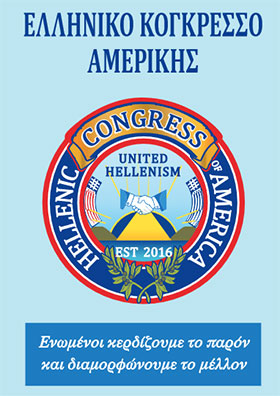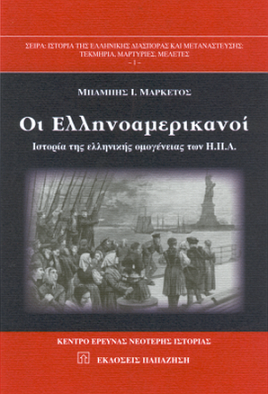Greece in Mexico: From a Greek eatery crawl to finding Hellenes in the heart of North America

When we think of Mexico we may think of the misconstrued conceptions that Hollywood conjures up; a land of poverty, backwardness, gun slingers and gangs. Hollywood will neglect to tell you the kindness of people, the food that only a yiayia can make, beaches aplenty and a landscape that often reminds of Greece.
Greater Mexico City, home to almost 24 million people, is Athens on steroids as culture meets food, arts and traffic! It is here that many Hellenes have drifted to over the years in the hope of making money and finding a second chance in life.
Greek migrants have been coming here since the 1800s. The first arrivals are said to have appeared in the 1700s via Greek shipping with sailors and merchants finding local wives and opportunities in cities such as Guadalajara, Sinaloa, Aguascalientes, Acaponeta, Tepic and Pachuca. During the second half of the 1800s, 1400 Greeks arrived. In the new century, thousands more followed by 1920.
The government helped facilitate new arrivals ostensibly for agriculture after WW2. The numbers grew by the end of the decade; one agricultural region became known as “Valle de Grecia.”

Despite the culinary delights of eateries and street vendors, I was drawn each night to Greek restaurants, starting with the authentic and trendy Ouzeria. The staff gave me extra attention for being the token Griego to visit that week. The next night I visited Estiatorio Nostos in Artz Pedregal, with a friend, located in a new, high-end mixed-use shopping mall.
My amiga is someone who had never eaten Greek food. She was stunned by the offerings. The restaurant had a design feel as if one was to merge Thessaloniki with Cyclades.

By the third day of my Greek restaurant crawl, it soon became evident that they were owned by one Greek man, Dennis Stevens, also known as Dionysos. Dennis is a Canadian-Greek who designs and owns Greek restaurants as a hobby. He now has six to his name, including Nostos at Lomas, which is one of the top five restaurants in Mexico. We will circle back to Dennis’ story in a moment, as he also runs Secure Corp a company with business contracts across North America.

In between my Greek eatery crawl, I managed to locate the Griego Barrio, an old Greek neighbourhood, at Calle Academia or Academia Street in La Merced. Back in the 1950s the Griego neighbourhood was full of Greek coffee, souvlakia and the sweat of Greek migrants. I walked around with a local one evening, there were at best two or three businesses that could be classified as being Greek, as most Hellenes moved on by the start of this century to other areas such as Naucalpan. The old Greek neighbourhood these days is more of a haven for students and other migrants hoping to replicate the well-worn path of Hellenes.
Depending on traffic, Naucalpan is about half an hour away, home to the beautiful Catedral Ortodoxa Griega de Santa Sofia and the headquarters for the Greek Community.

The impressive Comunidad Helenica de Mexico in Mexico City is led by Elena Stamatiadou; she has estimated that there are at least 1500 Greek or Greek origin families in the country. The community has a number of programs for Greeks including a cultural program, Greek school, lectures and events.
Sharing the one impressive compound, I toured the church where I met Padre Filáretos and like many Greek Orthodox priests that I locate in the Americas, there is a sense of kindness, and big heart. Padre Filáretos explained that there are at least 250 Greek families who have attended Agia Sofia at one point or another, with another 150 Mexican families who regularly attend.
I asked Padre in Greenglish how a young Mexican came to be a Greek Orthodox priest, especially as his uncle was a Catholic priest. He explained that his journey started over 15 years ago. “I had a faith and I commenced my studies to be a psychologist. By the end of my studies I felt I was missing God and needed God.” The Padre explained that he also wanted to learn about other religions there may be out there for his spiritual needs.

“I went to a Buddhist temple, then a Mosque…. I had been searching for a few months when I found this church, Agia Sofia. I thought it was Russian. I attended, sitting in the back seat. I felt the presence of God and cried; I felt God.”
“(Eventually) went to Greece to study theology for three years and subsequently two years of back and forth. During that time I learnt to speak Greek in Greece.”
Agia Sofia was established in 1964. There are up to two services per week plus Sunday. The Padre visits other missions in Mexico including Guadalajara and others every month for Greek Orthodox services. Guadalajara is the home of the Casa Helenica de Guadalajara and the Amigos de Grecia. Other Greek communities include Colotlan and Jalisco, while Comunidad Helénica of Culiacán is of course from Culiacán. Just like the small missions that the Padre visits, these communities are small in number and the Greek language is starting to lose relevancy by the third and fourth generations.

Another important aspect of Mexico City is that the Greek Orthodox headquarters for most of Latin America is based here, making it a hub for Greek priests from the Americas and abroad. Archimandrite Iakovos Andriopoulos is the new Metropolitan of Mexico by the Holy Synod of the Ecumenical Patriarchate. He is 30-years old and takes over from Metropolitan Athenagoras.
Mexico City is the casa for two Greek language teachers who teach Modern Greek at the university, having arrived in 2011. Αννυ Χρυσομαλλακου and her husband, both fluent in Spanish, are making a difference by teaching Modern Greek. Their hard work and perseverance is working as dozens of students of all ages are gaining fluency in the Greek language in any given year. They occasionally host and support Greek music events for the students.

Like Anni, Dionysos/Dennis made a move to Mexico City from abroad, though his arrival was closer to the start of the century, coming by way of Canada. What makes Dennis unique is that the restaurants are not his bread and butter. It’s a hobby and one that makes him smile as he talks about how he designs the restaurants; his personal imprint and vision generate a Hellenic creativity which ensures that staff and customers alike feel as though they are in Greece.
We had lunch one day at Estiatorio Nostos, Lomas, which is located on Monte Athos street, before a visit to his business headquarters near the heart of the city. His company has a knack of winning international contracts with various governments, placing Dennis as one of the leading Greek businessmen in the Americas, primarily in private equity. A proud Hellene, his young family also speaks Greek.

Dennis explains that he was born in Canada. All four grandparents are from Greece, three from Kephalonia and a grandmother from Asia Minor. Dennis explained that he visited Turkey and his grandmother’s town where the mayor spoke to him in Greek, even showing him where his yiayia was christened!
While his grandfather was in the restaurant business, his father had expressly forbade him to get into hospitality, yet softened his view when Dennis successfully introduced the first authentic Greek eatery to Mexico City a decade ago. It helps that Mexico has a thousand different fish species and the Atlantic and Pacific to choose from. As Dennis explains, Nostos is part of Greek literature, about a Greek returning home. He feels that Mexico is his Nostos, not just his restaurants. At Nostos, he has met many customers who have Greek heritage from generations back, they find that Greek food is a starting point to connect with their ancestral roots.

Mexico is a country with plenty to offer and has been home to hardworking Greeks for over two centuries who found it is their Nostos. As long as the language can be maintained, Hellenism will continue to remain strong in a country that Hollywood has typecast but we the visitor know its true worth, priceless.
SOURCE: Neoskosmos
Greece in Mexico mini documentary.
*Billy Cotsis is the author of The Aegean Seven Take Back The Stolen Marbles, Amazon.










Σχόλια Facebook